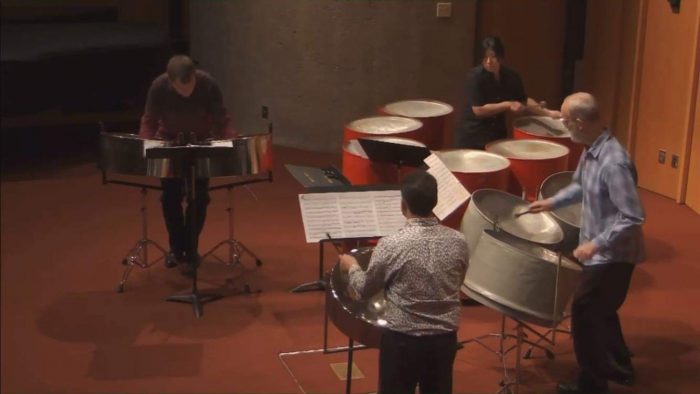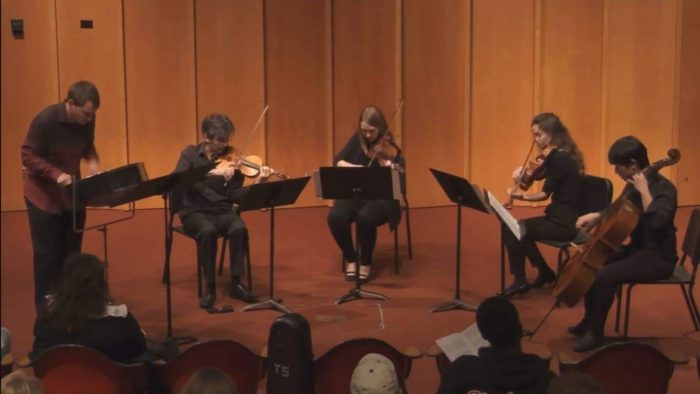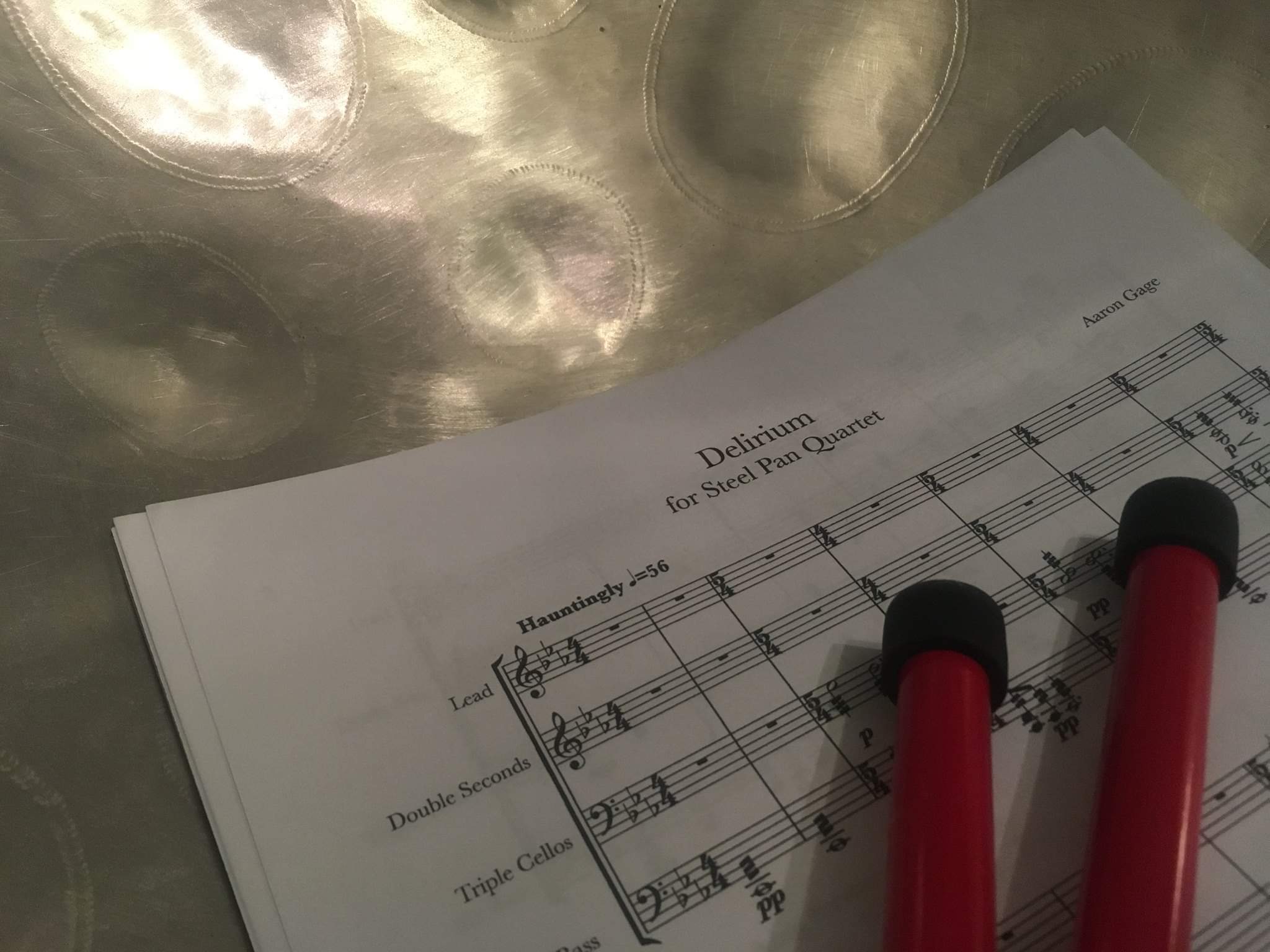Written by Mike Schwebke
With so much crossover and experimentation in music these days, it should be no surprise that there are plenty of composers looking to try their hand in bringing steelpan into their compositions and arrangements. The only catch is that many of those composers are unfamiliar with the nuances of the instrument. If they’re not careful, they can fall into common faux pas for novice pan composers that may stall their efforts before they can even put a note on the page.
Not to worry. Here are some tips to help you get them back on track.
1. Know steelpan history
I feel that it’s crucial that new contributors to the repertoire be aware of the social unrest around early steelpan and to be aware that classical music (most notably the TASPO performances) has been a part of the steelpan identity since inception. Learning more about the history of the instrument will prevent misunderstanding from the pan community at large and allow a larger audience to enjoy the composition.
2. Understand that the instrument is chromatic and fully tuned

To this day, I meet fellow musicians who don’t connect the chromatic sound of the steelpan to their cognitive recognition of the instrument. There is a significant portion of steelpan history in which many the instruments had limited pitch choices (including ping pong and dudup instruments, diatonic pans of the 40’s and 50’s, and to a lesser extent the pentatonic/diatonic hand-pans of the last 30 years). Don’t be offended — they simply did not know and had not given the topic much thought. Most often, they are excited to learn and glad to know of their perceived expanded possibilities on the steelpan. I usually let them know that the sheet music we use is the same as that of a piano or violin.
3. Explain the ranges of the individual instruments
Musicians and laypeople both may not realize, even though they may have seen a Tenor Pan or Double Seconds somewhere in popular culture, that there is a full orchestra of voices in the steelpan world. As a pan player, working with a composer that doesn’t have experience with steelpans, prepare yourself to use language that the composer will be familiar with: SATB (soprano, alto, tenor, bass) orchestration is generally the most universal way to describe the steel orchestra.
Generally speaking, I like to explain to composers the “safe” ranges of each instrument. Most frequently, we discuss the four or five-voice steel orchestra as the most common large ensemble instrumentations. They are Tenor, Double Second, Triple Guitar/Cello, Bass; and Tenor, Double Tenor, Double Second, Triple Guitar/Cello, Bass respectively.
There are several very good resources on instrument details online. If you intend to work regularly with composers, I suggest creating a packet of key information that includes the details about your instruments, and audio samples of pieces with varying instrumentations. I often share multi-instrumental ensembles (steelpan with other instruments), unaccompanied solo steelpan, contemporary full-steel-ensemble pieces, and pretty much always something from Panorama.

4. Just because it’s a percussion instrument, doesn’t mean that it has to be loud
Panorama performances may be loud, but the steelpan instrument by itself is not. From a “musically objective” perspective, I consider the effective range of the steelpan instrument to generally fall between pp and mf. There are some pans by certain builders that have extended ability on the high dynamic range, but always educate the composer on the capabilities of your own instrument. I recommend playing excerpts at different dynamic levels and explaining how the distorted sound that often happens at very loud dynamics is, in fact, bad for the instrument’s intonation in both the short and long term. When orchestrating most instruments, one effective way to gain dynamic volume is to add instruments (unison or octave doublings) rather than saying “play louder.”
5. Just because it’s percussion doesn’t mean we can’t savor the pitch/timbre
This point is something we sometimes need to remind composers about all pitched percussion instruments. Timpani don’t have to thud, marimba can sing melody and accompaniment, and vibraphone can play clear/short pitches. One of the steelpan’s most unique characteristics is its beautiful timbre. The instrument and the music can groove and be very percussive in nature, but composers should not be afraid of exposed textures, singularly articulated long rhythmic values, and rolls/long tones.
6. Explain the nature of the non-linear note arrangement — then tell them to forget it
There are some passages that are more difficult than others on all instruments. I feel that the exercise of explaining how awkward certain movements and groupings can be is an important part of the conversation with a new steelpan composer since the instruments are laid out in a circle! It also makes for a very inclusive and experiential process for developing the composer’s perceptions of the steelpan.
Once that conversation is done, I immediately tell them to forget all of that. Write ideas and themes as they are inspired, regardless of “rules.” It’s the job of the performer to interpret those ideas and make them reality. If a particular passage happens to be extremely difficult, a responsible performer must prepare it appropriately. Though, one luxury we have as artists commissioning composers is that everything is pre-published. If an idea truly doesn’t work (orchestrally, technically, or otherwise), we can pick up the phone and talk through the musical goal of the composer to find an executable compromise. I try to avoid these phone calls and try to prepare material as the composer put it to paper. I often share excerpt recordings back to composers of themes that appear important, or if I am unsure of his/her intentions and want to be able to share a collaborative music voice with the audience at the premier.
7. Explain the instrument’s physics
Anticipating the very active sympathetic vibrations created by pan can often be difficult due to the large quantity of overtones present in the timbre of any pan. Many of the notes located adjacent to those being struck will vibrate as well since they share a contiguous piece of material. These vibrations can often be easily heard or perceived. Knowing the layout of whichever pan the composer is writing for can help anticipate this.
8. Explain common implements

The steelpan generally has only one implement: the rubber-tipped mallet. While there are variations on this that can have very subtle effects to the sound of the instrument, many steelpan players are not in the habit of having more than one type in their case. The common variations that steelpan players should consider possessing are a light, medium and heavy shaft (bamboo, carbon fiber, wood, or aluminum) all with whatever tip material they prefer. Players should also consider having a wrapped-style tip along with a tube rubber option. The advantages of a wrapped mallet include: timbre be easily adjusted by wrapping tighter or looser, and the effective weight can be modified by the wrapping shape or how the excess rubber is wrapped along the shaft of the mallet.
There are some notable implements that border between common and extended technique. The two that don’t require carrying extra mallets in your bag are your fingers and playing col legno. Playing with your fingers can create a variety of timbres, most of which are very thin and quiet. Col legno, in this case, is playing with the back of the stick. The sound is very bright and harsh. I try to limit composers to using this technique only on dynamically soft passages due to the increased risk of damage to the instrument. A common way to limit damage to the instrument while recreating col legno timbre is to play with a very small wooden implement like a chopstick or small wooden dowel.
9. Explain common extended techniques
Extended techniques are becoming very common in much of the contemporary instrumental repertoire; steelpan is no exception. Besides fingers and col legno, other convenient extended techniques include playing the skirt, the rim, or the areas in between note surfaces. There are a number of extended techniques that will require additional equipment like bowing the skirt, pouring water into the pan, applying magnets to note surfaces, adding vibrating rivets or plucking (rubber) bands to a bore pan.
10. Remind them that this instrument is equal to all others — and to have fun!
Every instrument is unique, that is the one thing they ALL share. Composers should not treat the steelpan like a cheap novelty. While it has a unique, genuinely novel timbre and history, the instrument is as modern and capable as any other voice for compositional consideration and should be treated as such. We in the pan community appreciate the care and attention to detail that composers share in the art of creating new repertoire!






